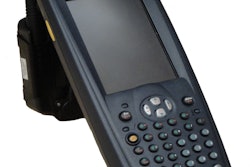
During the just-completed back-to-school season, retail sales were forecast to be flat to slightly up from 2015, presenting another test to merchants already facing a host of industry challenges. Traditional brick-and-mortar retailers face rising competition from online sellers like Amazon and Staples, in addition to other pressures being put on their profit margins. Challenges include omnichannel operations, supply chain costs, inventory visibility and customer acquisition.
But there are new technologies and solutions—related to the Internet of Things (IoT)—that are creating opportunities for retailers to improve omnichannel operations, better manage inventories, reduce logistics costs, and retain and acquire customers. Chief among them is supply chain optimization, including in-transit visibility. Enterprise resource planning (ERP) and transportation management systems (TMSs) relied on by retailers do not provide the information required to analyze the supply chain in real time, make up-to-the-minute delivery adjustments and help merchants plan for the next sales season.
But the IoT—along with Big Data—offers a solution to unlock end-to-end supply chain visibility, giving retailers the ability to save costs through improved efficiency by better planning with analytics and machine learning. Chief among these benefits are increases in on-time deliveries, reductions in planning and scheduling costs, opportunities to decrease inventories, reduced transportation costs and improved cross-docking efficiency. Combined, these benefits enable a retailer to improve customer service, and increase revenue and margins.
Supply chain visibility begins with the connectivity provided by IoT technology, and its ability to transfer massive volumes of real-time data across internal and external supply chain networks. The data can come from any source—sensors, electronic data interchanges (EDI), global positioning systems (GPSs), weather and traffic reports, automatic identification systems (AISs), telematics, mobile—even social media. From these sources, retailers can determine the location and condition of their shipments in real time, and can share information and insights across the supply chain network.
The benefits of supply chain visibility extend beyond retailers to manufacturers and consumer packaged goods (CPG) companies. The rise in incomes and consumption in emerging markets in the past two decades led many CPG companies to expand globally. But along with this growth comes increased logistics challenges. Logistics problems at Nike caused the giant athletics equipment maker to form a supply chain partnership with private equity firm Apollo Global Management LLC. Recent reports about the CPG industry by Boston Consulting Group, Gartner and McKinsey & Company cite Big Data analytics, machine learning, improving delivery performance, visibility and demand-driven supply chain management as key supply chain trends.
The IoT and Big Data are essential to gaining supply chain visibility, but turning that information into business insight requires more. Machine learning algorithms reveal deep insights and uncover patterns hidden in the large amount of IoT data. Logistics machine learning models are developed, trained and tested using real-time IoT data, historical data and contextual information, such as prevailing weather and traffic information. The models learn from organization, user, environment and transportation behavior, and apply that knowledge to each forecast. Example: During the back-to-school season, which electronic products (i.e. smartphones, tablets) shipped on time, arrived most reliably and required the fewest restocks? A machine-learning algorithm can analyze this data in ways that are not possible in ERP and TMS systems. Machine learning models know which shipments to expedite, which carriers to use, what time is best for clearing customs, and what routes are best for road, ocean and rail.
An inefficient distribution center operation is a prime example of what can stress a supply chain, resulting in late deliveries, poor service, lost sales and increased costs. Moving products, pallets, and containers between vehicles and shipping modes can be optimized with in-transit visibility, which improves scheduling and tracking of all shipments. In-transit visibility enables cross-docking, and enhances throughput and capacity. Real-time visibility also improves just-in-time operations and inventory management.
Example: A Fortune 500 CPG company needs global end-to-end supply chain visibility from external and internal supply chain partners, including suppliers, carriers, customers and third-party logistics (3PL) firms. Through the IoT, Big Data analytics and machine learning, the company understands transportation patterns, such as optimal departure times depending on day of the week, time of day, performance by carrier and lane, and what routes are best for road, ocean, rail and intermodal transportation. It improves cross-docking productivity because the company knows where in-transit goods are at any time.
This real-life example demonstrates why more retailers and manufacturers are harnessing the IoT and Big Data analytics to achieve in-transit visibility and transform their supply chain operations. As the back-to-school season ends and the holiday shopping season gets underway, chief supply chain officers (CSCOs) who must improve their logistics operations should keep this in mind.














